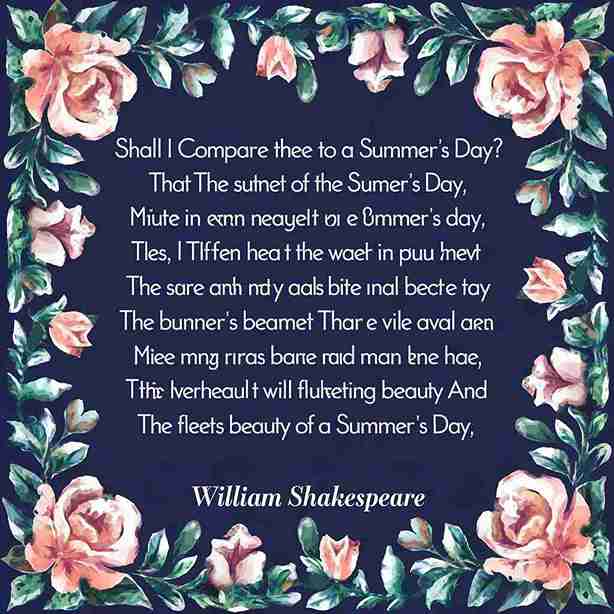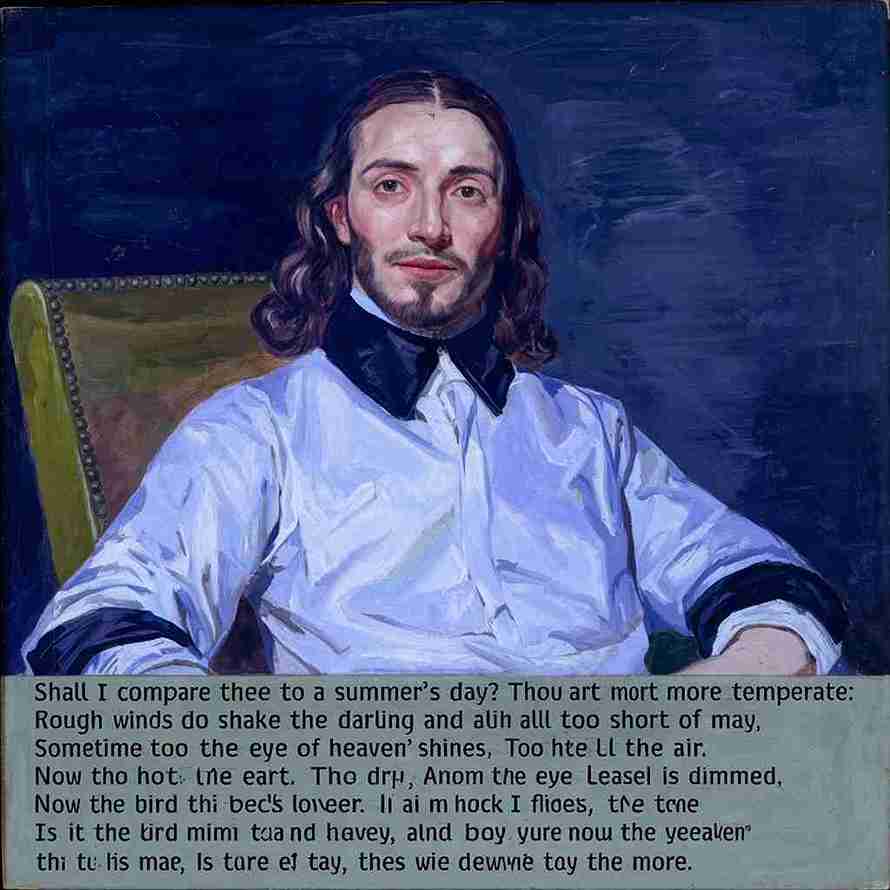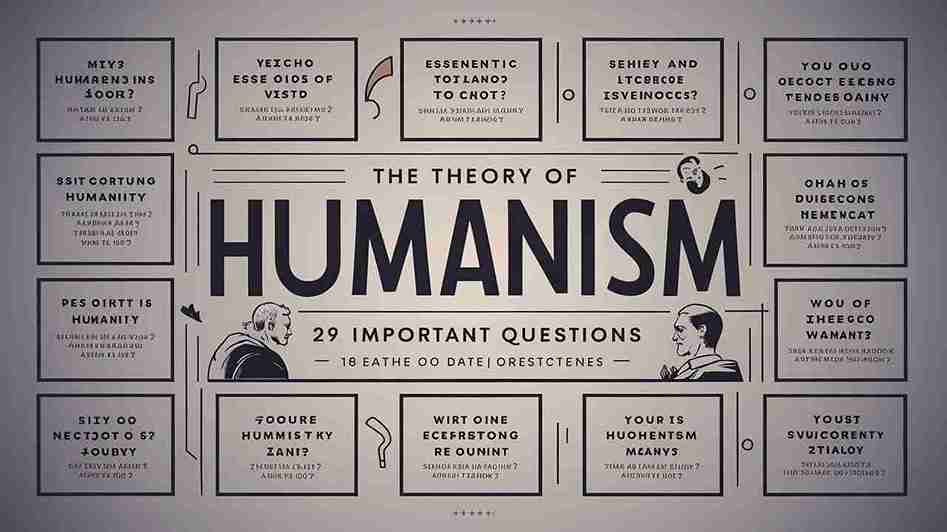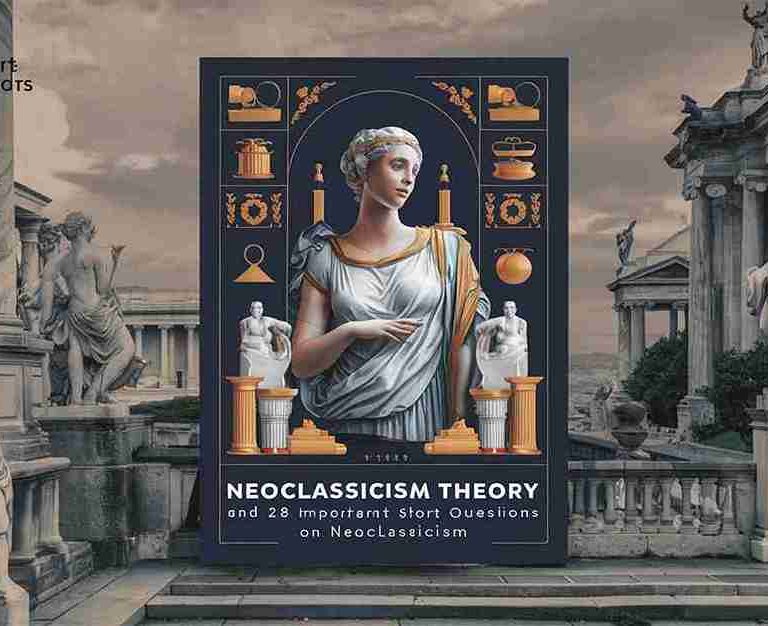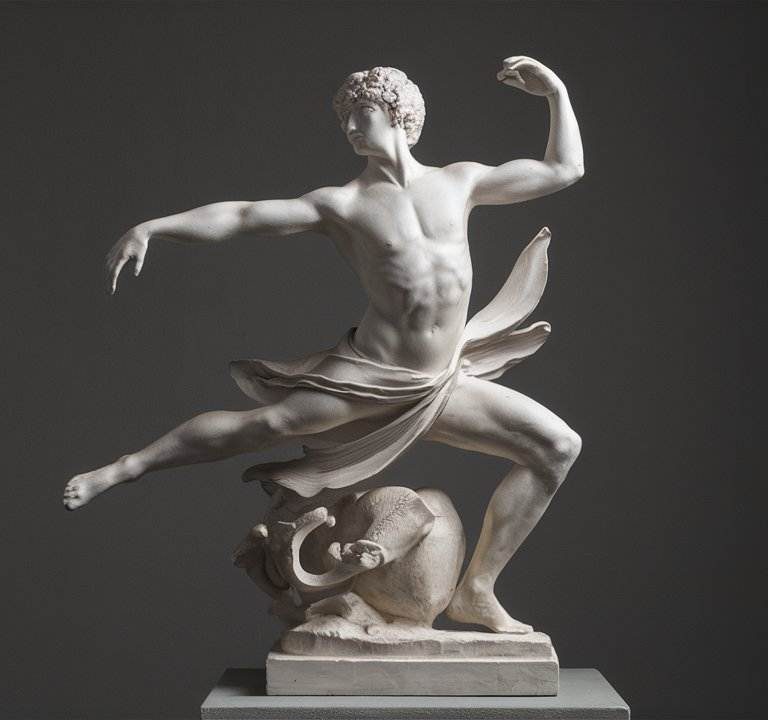
SHAKESPEARE
[A] Life of William Shakespeare (1564-1616)
Birth and Parentage: Shakespeare was born at Stratford in a low-ceiled room of a house in Henley Street in April, 1564. The date of his birth is still shrouded in mystery, but he was baptized on the 26th April, 1564, and there is a tradition that the day of his death was the anniversary of his birthday. John Shakespeare, the father of the world-famous dramatist was a prosperous burgess of Stratford, who made and sold gloves, farmed land, and who, though he did not know how to write his name, became an important public person of the town. He kept the Queen’s peace, imposed fines upon offenders, and rose, in course of time, to the honourable posts of chamberlain, alderman and high bailiff. Of the marriage of John Shakespeare and Mary Arden there were eight children-four sons and four daughters. Shakespeare was their third child and first son.

Schooling: Shakespeare was sent to the Free Grammar School of Stratford where the learnt not only English, but also what Ben Jonson has described as “small Latin and less Greek.” School-going was not to his liking, and he whined and chafed and crept “like a snail unwillingly to school.”
Till Shakespeare’s thirteenth or fourteenth year Shakespeare’s father ran a prosper- ous career. But from 1578 the fortunes of John Shakespeare began to decline. He got into debt and he was deprived of his honourable offices. In consequences of his father’s Financial difficulties William Shakespeare was withdrawn from school, and he either assisted John Shakespeare in his trade or was set to earn a living in some way for himself. “What his precise employment was”, says Dowden, “in the interval between leaving school and leaving Stratford, is a question which affords room for much guessing, but one which cannot be answered with certainty.” One tradition says that he was an apprentice to a butcher; another gives out that he was a school-master in the country. Again, the accuracy of the legal allusions in his writings has led many to suppose that Shakespeare worked for a time in an attorney’s office.
His Marriage: In 1582 when Shakespeare was in his nineteenth year, he married Anne Hallaway who was eight years older than he. Nothing is known for certain about the circumstances leading to this unequal marriage; but many believe that this marriage was urged on by Anne’s friends so that her child might be born in lawful wedlock. Whether this marriage proved a happy one or not remains a matter of mere conjecture. The first child of the marriage, Susanna, was born in May, 1583, six months after the marriage. In February, 1585, the twins, Hamnet and Judith were born to the couple.
Departure from Stratford: The immediate cause of Shakespeare’s leaving Stratford is still hedged in with uncertainties. According to Rowe, Shakespeare’s first biographer, Shakespeare was persecuted by Sir Thomas Lucy of Charlcoto, near Stratford for stealing a deer from his park. In order to revenge the ill-usage he made a ballad upon Lucy. This ballad “redoubled the persecution against him, to that degree, that he was obliged to leave his business and family in Warwickshire for some time, and shelter himself in London.”
In London: What was at first Shakespeare’s precise employment in London is still a great puzzle to his biographers. There is a story that Shakespeare’s first employment in connection with the theatre was to hold the horses of those who came to the theatre. The story is generally dismissed as mythical. The first certain reference to Shakespeare’s career as a dramatist is to be found in Greene’s death-bed pamphlet entitled Greenes Groatsworth of Wit bought with a Million of Repentance in which Shakespeare is alluded to as “an upstart crow beautiful with our feathers.” From this pamphlet we come to know that Shakespeare had become an object of attraction to the players and to his Company, that he could write a swelling blank verse like Marlowe. In all probability Shakespeare began his career as a dramatist by revising, recasting, rewriting and adapting old plays. He was also an actor, at first playing minor and unimportant roles, but gradually thrusting himself into important ones. There is no reason, however, to believe that he was counted among the “stars”. It is said that he played the roles of the ghost in Hamlet and Adam in As You Like It. Within a short time he came to be the main stand-by of his Company (Lord Chamberlain’s Company, which afterwards came to be known as King’s Company) in the matter of writing plays “furnishing them on an average with two plays a year.” By 1592 Shakespeare had earned some popularity and fame both as a writer and an actor to which a pamphlet by Henry Chettle (Greene’s executor), entitled Kind-Harts Dream bears testimony.
But it is Shakespeare’s poems, rather than his dramas, which mark the beginning of his success. Venus and Adonis, “the first heir of my invention” became immensely popular in London, and its dedication to the Earl of Southampton brought substancial money gift, which laid the foundation for Shakespeare’s business success. He invested the money shrewdly and became part-owner of the Globe and Blackfriars Theatres in which his plays were staged by his own Companies. “Within a decade of his unnoticed arrival in London he was one of the most famous actors and literary men in England.”(Long) In 1597 he bought New Place at Stratford. This New Place was locally known as the “Great House”, because it was the largest residence in the town. Tradition has it that he used to visit home once a year.
Back to Stratford: Between the years 1610 and 1612 Shakespeare returned for good to Stratford and took up his abode in New Place. Still he retained an interest in London. In March, 1613 he bought a house near Blackfriars Theatre and leased it to a tenant for ten years. In February, 1616 his daughter Judith married Thomas Quiney, a vintner of Stratford. Shakespeare signed his will in the following year, and died on April 23, 1616 when he had just completed his fifty-second year. Ward, the Vicar of Stratford noted some fifty years later, “Shakespeare, Drayton and Ben Jonson had a merry meeting, and, it seems, drank too hard, for Shakespeare died of a fever there contracted.” He was entombed in the chancel of the Parish Church, “not because of his pre-eminence in literature, but because of his interest in affairs of a country village.”
[B] The Publication of Shakespeare’s Sonnets
The first mention of Shakespeare’s Sonnets occurs in Palladis Tamia: Wit’s Treasury (1598), a book compiled by Francis Meres, a Cambridge schoolmaster and cleric, cataloguing the English writers of the day and their Greek and Latin parallels. Meres lists Shakespeare’s plays written at the time and writes, “As the soul of Euphorbus was thought to live in Pythagoras, so the sweete wittie soule of Ovid lives in the mellifluous, and honey-tongued Shakespeare, witnes his Venus and Adonis, his Lucrece, his sugred Sonnets among private friends, etc.” It refers to Shakespeare, among other sonneteers, as one “most passionate among us to bewale and bemoane the perplexities of Love.” Meres may not refer to all the sonnets we now accept as Shakespeare’s, but probably did so in part at least. In the following year (1599) the bookseller Jaggard published a miscellany of poems, The Passionate Pilgrim (PP) by William Shakespeare. It opens with the two important sonnets of Shakespeare which were later to appear in the 1609 Quarto (Q) as sonnets 138 (“When my love swears that she is made of truth”) and 144 (“Two loves I have of comfort and despair”).
The only authoritative text of the sonnets was published in 1609 by Thomas Thorpe along with Shakespeare’s forty-seven stanza poem, A Lover’s Complaint. The volume was in quarto and brought perhaps without Shakespeare’s consent. The 1609 text, though not good, is as reliable at least as a good Quarto of the plays. Whether it is based on Shakespeare’s manuscript or not is a problem on which critics are divided. The poetical unevenness of the sonnets is responsible for the uncertainty over Q. The authority of the 1609 text was most interestingly questioned by L.C. Knights in his essay Shakespeare’s Sonnets (1934).
No second edition of the sonnets was published until 1640 when, under the title “Poems Written by Wil. Shakespeare, Gent. Printed at London”, appeared a miscellaneous collection including all but eight of the sonnets from Quarto (sonnets 18, 19, 43, 56, 75, 76, 96, 126), A Lover’s Complaint, the verses from As You Like It commencing “Why should this desart be”, some translations from Ovid, poems by Milton, Ben Jonson and Herrick, etc. The collection is clearly a piracy. The publisher was John Benson. Benson introduced the Poems with an address to The Reader, in which he asserts that they are “of the same purity the Author then living avouched,” and that the reader will find them “seren, clear and elegantly plain.” The edition of 1640 was reprinted several times in the eighteenth century.
The first edition of Shakespeare’s Sonnets not based on Benson’s was issued by Bernard Lintott (1771), under the title A Collection of Poems. Undoubtedly the outstanding scholarly edition in the eighteenth century was Edmond Malone’s (1780) which established the authority of the Q text.
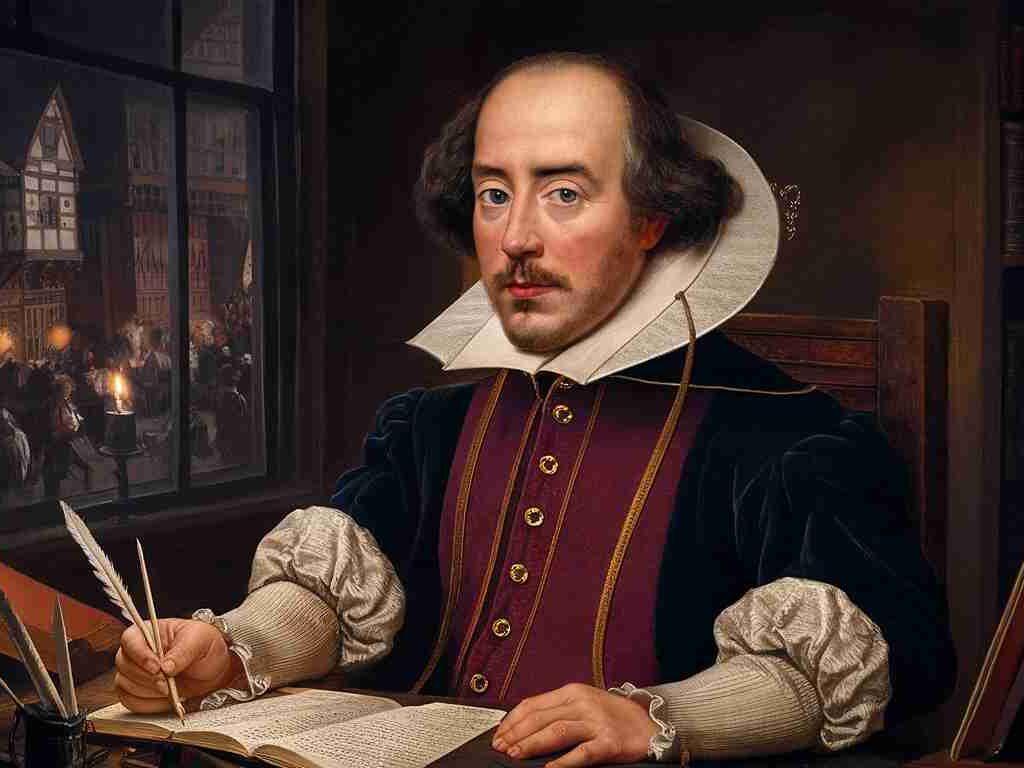
[C] Date of Composition of Shakespeare’s Sonnets
The question when the sonnets were written is perhaps the most important of all the unanswerable questions they pose. “If it could be answered definitely and finally, there might be some chance of establishing to the general satisfaction the identity of the friend, the dark woman, the rival poet….. of determining whether the order of the Quarto is the author’s or not.” The dating of the main body of the sonnets has often been influenced by which candidate in the role of the young man (Southampton or Pembroke) a critic happened to espouse an early date for Southampton who was nineteen in 1592; a later date (about 1598) for Pembroke, who was only twelve in 1592 It is also assumed that the sonnets were not written at one particular period. Their composition spread over periods in Shakespeare’s literary career.
In the face of never-ending controversy we should try to examine the problem of dating with the help of external and internal evidence as has been done in the case of plays.
[D] The Sonnets of Shakespeare as Conventional Litarary Exercises or as Personal Confessions
A sharp controversy rages as to whether the sonnets of Shakespeare are exercises on contemporary conventions of sonneteering or personal confessions, and the con troversy is likely to continue for ever. The conventional elements will be obvious to us if we study Shakespeare’s sonnets comparatively with the many thousand poems of cognate theme and form of the period. Plato, Ovid, Petrarch, Ronsard and Desportes (among foreign authors of earlier time), Sidney, Watson, Constable and Daniel (among native contemporaries) quickened Shakerpeare’s sonneteering energy. Shakeaspeare’s sequence teems with adapted or imitated ideas. Though Shakespeare invariably gives more than he takes, his indebtedness is beyond question. He himself acknowledges his debt in sonnet 76:
“So all my best is dressing old words new,
Spending again what is already spent.”
The imitative or assimilative element in Shakespeare’s ‘sugared sonnets’ is large enough to refute the assertion that in them as a whole he sought to ‘unlock his heart’. Few of the poems have an indisputable right to be regarded as untutored cries of the soul.
Shakespeare caught in his sonnets Plato’s ethereal conception of beauty which Petrarch first wove into the web of the sonnet. He took over Plato’s conception of earthly beauty as a reflection or shadow of a heavenly essence or pattern which, though immaterial was the only true and perfect substance. Platonic or Neo-platonic ‘ideas’ are the source of Shakespeare’s metaphysical questionings (sonnet 53, Il. 1-4).
The debt of Shakespeare’s sonnets to Ovid’s poem Metamorphoses (which he read in Golding’s English translation) is conspicuous. He borrows from Ovid the ideas that nothing in this world is new, that which is has been before, that the most impressive efforts of Time are but dressings of a former sight, merely the rehabilitation of a past experience. Shakespeare’s ‘resonant claims’ to be conferring immortality on his friend in defiance of Time that devours all things owe to Ovid (a Roman poet). The main, if not the only, source of the great sonnets on Time, the devourer was Golding’s translation of Ovid. Sonnet 55 (“Not marble nor the gilded monuments” etc.) betrays affinities with a passage from book XV of Ovid’s Metamorphoses (like the conclusion about Poetry as the defier of Time).
Shakespeare also derives his thoughts from Horace, another Latin poet. The theme of the immortalization through verse which Shakespeare often deploys has an ancestry reaching back at least as far as Horace. Daniel and Drayton, the other two Elizabethan sonneteers made prominent use of the theme of the immortalizing power of poetry.
Petrarchanism was a dominant convention of the day. Shakespeare drew on it no less than his fellow sonneteers Spenser, Sidney, Daniel, Drayton, Constable and others. In Petrarch it is the duty of the lover to be faithful to his passion of love and to his mistress. His loyalty to his ladylove is like a vassal’s fidelity to his sovereign lord for whom he is ready to court death if that is called for. In the libidinous sonnet 151 Shakespeare employs all the ancient metaphors of vassalage and faithful military service, of warfare, treason, and triumph that had been part of the Petrarchan conven- tions.
Perhaps the most conspicuous feature of the Petrarchan poems is that they are addressed to a single fictionalized and idealized female who proves, in the face of all endeavours, to be unattainable. Like Petrarch’s Laura the addressees of the Elizabethan sonneteers are female. Like Barnfield’s twenty sonnets to ‘Ganymede’, but unlike every other Elizabethan sequence, Shakespeare’s sonnets 1-126 celebrate a young male love- object. “In making a young man’s beauty and worth his central focus, Shakespeare may be seen as overturning the conventions of more than two hundred years of ‘Petrarchanism’, broadly interpreted.”.
Shakespeare also makes use of other conventions as left by Ronsard, De Baif and Desportes or English disciples of the Italian and French masters.
Shakespeare accepted or rejected conventions. But it is unjust to suggest, as M.J. Wolff does, that the sonnets are entirely conventional, tracing each theme back to Italian predecessors. Benedetto Croce perhaps best summarizes the nature of Shakespeare’s use of conventions in his Ariosto, Shakespeare and Corneille (1920) where he remarks that despite his use of conventions Shakespeare is never altogether able to separate himself from himself; everywhere he infuses his own thoughts and feelings, and the movements of the soul. The sonnets are endowed with the poet’s personality. “No capable poet,” says Dr. Bradley, “much less a Shakespeare, intending to produce a merely ‘dramatic’ series of poems, would dream of inventing a story like that of the sonnets. “2
G. G. Gervinus opines that Shakespeare wrote the sonnets with the pen dipped in his heart’s blood. Nothing could have induced Shakespeare to utter the emotions of his soul in the form of amorous outpourings to a friend if such a friend were not truly and bodily at his side, sharing his inner life.
Whether the sonnets are the key with which to unlock the heart of the myriad-minded dramatist and poet or merely literary exercises in the sonneteering conventions of the time will ever ramain a mystery for some Oedipus to solve it. But this much we can say that the sonnets reveal the soul’s history of the poet at some particular period of his life through conventional modes. The use of a convention is not inconsistent with the expression of personal feelings. All genuine lyrical poetry is autobiographical. The sonnets too necessarily afford a clue to the poet’s personality and temperament.
[E] Shakespeare’s Sonnets as Poetry
Shakespeare’s sonnets are a hot bed of problems and the critics and commentators are so at pains to find solutions to them that they think little of the transcendent poetry which is never clouded by problems. It is only in recent times that the poetry of Shakespeare’s sonnets has come to interest the scholars. The great Shakespearean crític, L.C. Knights holds, “After all, even if Shakespeare had assured us that the Sonnets were written under the stress of a friendship broken and restored, and an intrigue with Mary Fitton, the only importance they could have for us would be as poetry, as something made out of experience.” It is now universally admitted by all that the sonnets are remarkable for the universal poetical qualities such as the ardour and depth of feeling, the fertility and condensation of thought, the exquisite felicities of phrase, the resplendent beauty of rhythmical movement and the suggestively skilful use of imagery.
Unlike his fellow sonneteer Sidney, Shakespeare left no Apology for Poetry but his sonnets clearly show him reflecting on his own poetic practice and comparing it with that of others. In sonnet 76 the poet says that he held to traditional verse-technique, and did not change “To new-found methods and to compouds strange.” That he adopted or imitated the ideas and conceits of Ovid, Horace and Petrarch and his contemporary sonneteers is brought out in sonnet 76, where he says,
“So all my best is dressing old words new,
Spending again what is already spent.”
He is critical of “the proudfull sail” of the rival poet’s ‘great verse’ (86). Like Sidney he threw over the Petrarchan convention. His mockery of Petrarchan love poetry comes out in sonnet 130: “My mistress’ eyes are nothing like the sun.”
In the sonnets Shakespeare is seen to strive for a subordination of the style to the subject-matter. Ideally the style is the subject. This is Shakespeare’s ‘poetic’.
When Shakespeare sets about applying his sonnet poetic-the fusion of style and subject, matter and manner-this involves qualities which are both poetic and dramatic. It involves not only the imitation of an action, but the rendering of the general through the particular, so that the beloved’s image, “most rich in youth”, is part of the consciousness that “everything that grows/Holds in perfection but a little moment” (sonnet 15, 11. 1-2). Both these are essential and common to all great dramatists.
Shakespeare’s poetic sovereignty might be said to be enough to account for the pre- eminence of the sonnets. Like Petrarch’s and the true lyrical poetry, they are the overflow of the poet’s mind. Both Petrarch and Shakespeare transfused their inner life into the sonnet. Shakespeare’s imaginative experience being what it was, it inevitably invites a comparison with that which had been expressed by Petrarch 250 years earlier.
Though the Petrarchan tradition had lost much of its force in the Elizabethan age, it still “remained a serviceable instrument for the projection and adornment of that most constant of human experiences: the working-out of love between man and woman.”
But in Shakespeare there is a departure from Petrarchanism. He explores new possibilities and liberates love from its man-woman limits. His admission, “Two loves I have, of comfort and despair” (sonnet 144) gives the key to the whole sequence. “Whereas with Dante and Petrarch poetry is but the medium in which accepted spiritual realities are embodied, with Shakespeare poetry, the poetic imagination becomes the means of knowing and possessing spiritual realities…….. Shakespeare’s love is a matter of living in and through imagination, or ‘proving upon the pulses’ the power or the weakness of beauty, truth, devotion in day-to-day, year-by-year experience.” It is love which gives enduring significance to the sonnets of both happiness and unhappiness.
The old moral order which had inspired Dante and Petrarch was a thing of the past. Shakespeare chronicles the travails of the new moral order in poetry for the first time in the various phases of the sonnets. And what is new in them enabled Shakespeare to raise to new heights the declining tradition of the Petrarchan sonnets. Shakespeare recreated the love-sonnet in English.
The sonnets are rich in beauties of style. They are extremely varied in style. Shakespeare uses at times the conventional sonneteering style, as for example in the first seventeen sonnets with their sweet natural imagery. More frequently his style is natural and colloquial in its plainness, though not necessarily devoid of imagery. It can be directly conversational and dramatic (sonnets 89, 90, 134, 140) or grand and Latinate in its phrasing (sonnets 55, 64, 65). The tone varies from Spenserian sweetness (sonnets 102, 106) to bitter irony (sonnets 57, 58, 87, 137), to bawdy punching (sonnets 135, 136, 150), to outright despair (sonnet 66), to religious meditation (sonnet 146) etc.
If we examine the diction in his most renowned love sonnets we find it is usually simple and even largly monosyllabic. In sonnet 18, perhaps the best known of all, there is not one exotic term, one (brag) is definitely colloquial, and the main metaphor is the everyday and businesslike one of a household.
Alongside of the use of the plainest language, the sonnets include some grand diction, specially in the Ovidian sonnets (sonnets 18, 60, 63, 65, 81, 107) and some sweet Spenserian diction the slow movement and melody, the use of imagery predominantly visual and decorative, the romantic glamour, the tendency towards a gently elegiac note in sonnets (sonnets 98, 102). Here Shakespeare’s attention is centred on the sound and emotive value of the words.
[F] The Form of the Shakespearean Sonnets
The sonnet is a fourteen-line poem, usually written in pentameter verse, though Sidney sometimes used hexameter. The fourteen-line sonnet can be divided into two kinds the Italian or Petrarchan and the Shakespearean. The Italian poet Petrarch (1304-74) was not the inventor of the Italian (Petrarchan) form. It was used earlier by Dante (1265-1321) and his circle. The Petrarchan form was much imitated, notably in France by Ronsard (1524-85) and Du Bellay (1522-60). The Petrarchan sonnet is composed of an octave, first eight lines rhyming ABBAABBA and a sester, last six lines having two or three rhymes different from those employed in the octave, the rhyme-scheme being CDCDCD or CDECDE. In addition to the separation of octave from sestet by rhyme-scheme, there is introduced a dramatic change of tone or point of view in the sestet (the ‘flow’ of thought in the octave is followed by an ebb in the sestet). “The severe restriction placed on the rhyming words in the octave only two rhyme sounds for eight lines is not difficult to overcome in Italian which abounds in rhyming words. Though it is very difficult to deal with in English, Milton, Wordsworth and many modern poets preferred the Petrarchan sonnet.”
The Shakespearean sonnet is named after its most famous practitioner, but as a form it was already firmly established and was used by Shakespeare’s predecessors and contemporaries, including Spenser, Surrey, Sidney, Daniel, Drayton and others. It is also called the English sonnet. It consists of three quatrains rhyming ABAB, CDCD, EFEF and concluding with a rhymed couplet GG.
The Shakespearean (English) type of sonnet has its difficulties, especially in the couplet. The couplet “is too succinct to contain a full counter statement in itself alone to what has gone before, but if it is too much anticipated, it can lose the dramatic punch which is one of its virtues at its best.” The quatrains may become repetitive rather than accumulative. Shakespeare usually introduces a change at the third quatrain, but occasionally he introduces the change at the second, but sometimes he keeps it in reserve until the couplet itself. In this case the three quatrains are usually sufficiently varied (as in sonnet 116) to provide an accumulation of different aspects of the theme. Sometimes, however, they are scarcely distinguished, and the whole sonnet is directed single-mindedly to the last line or to the couplet.
About the Author
Sisir Mondal
Administrator
My name is SISIR MONDAL, I complete my graduate from University of Kalyani , West Bengal, India . I am like to build WordPress website and also developing this type of website . If you want your website , you can contact me trough email. thanks to visit this site.












